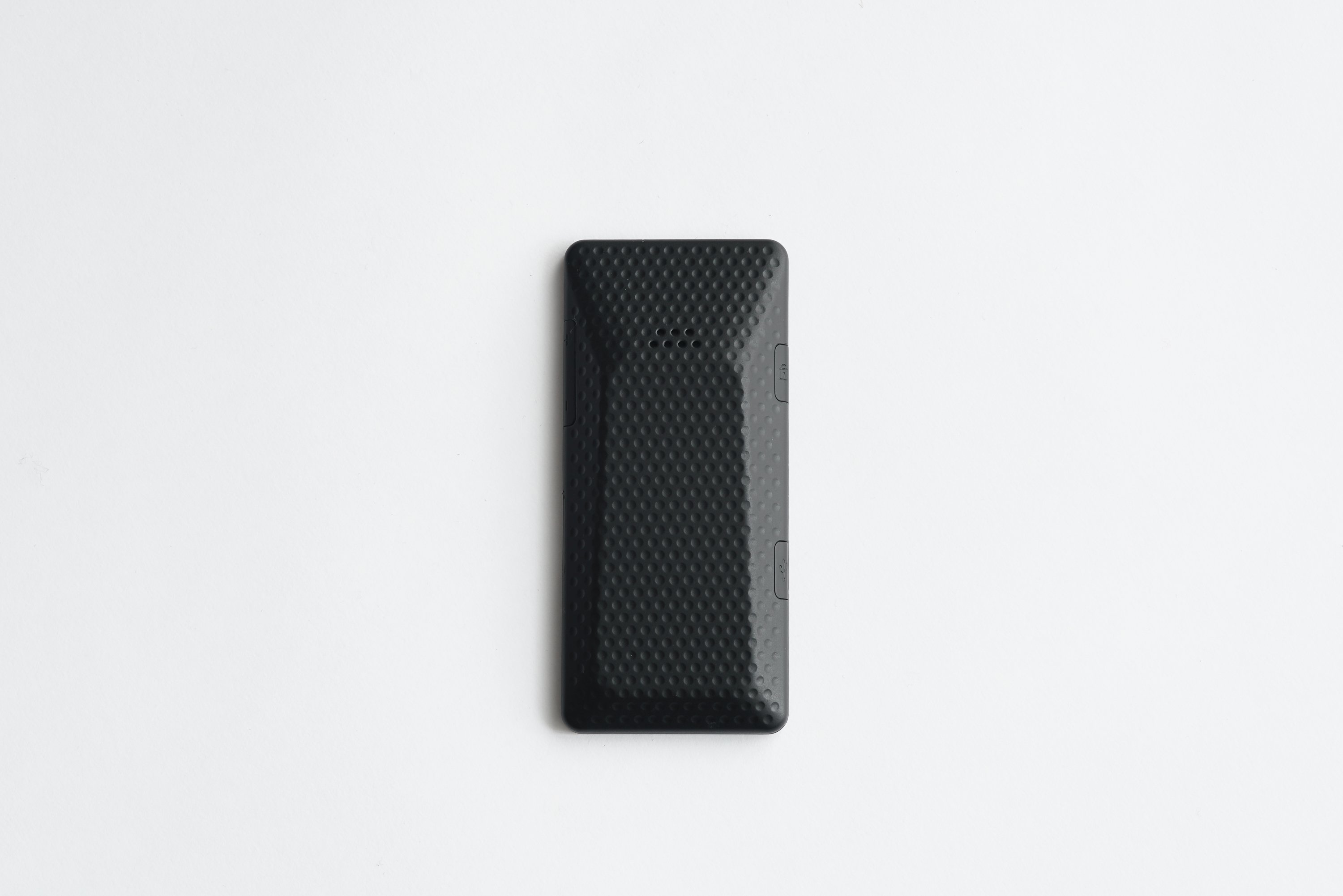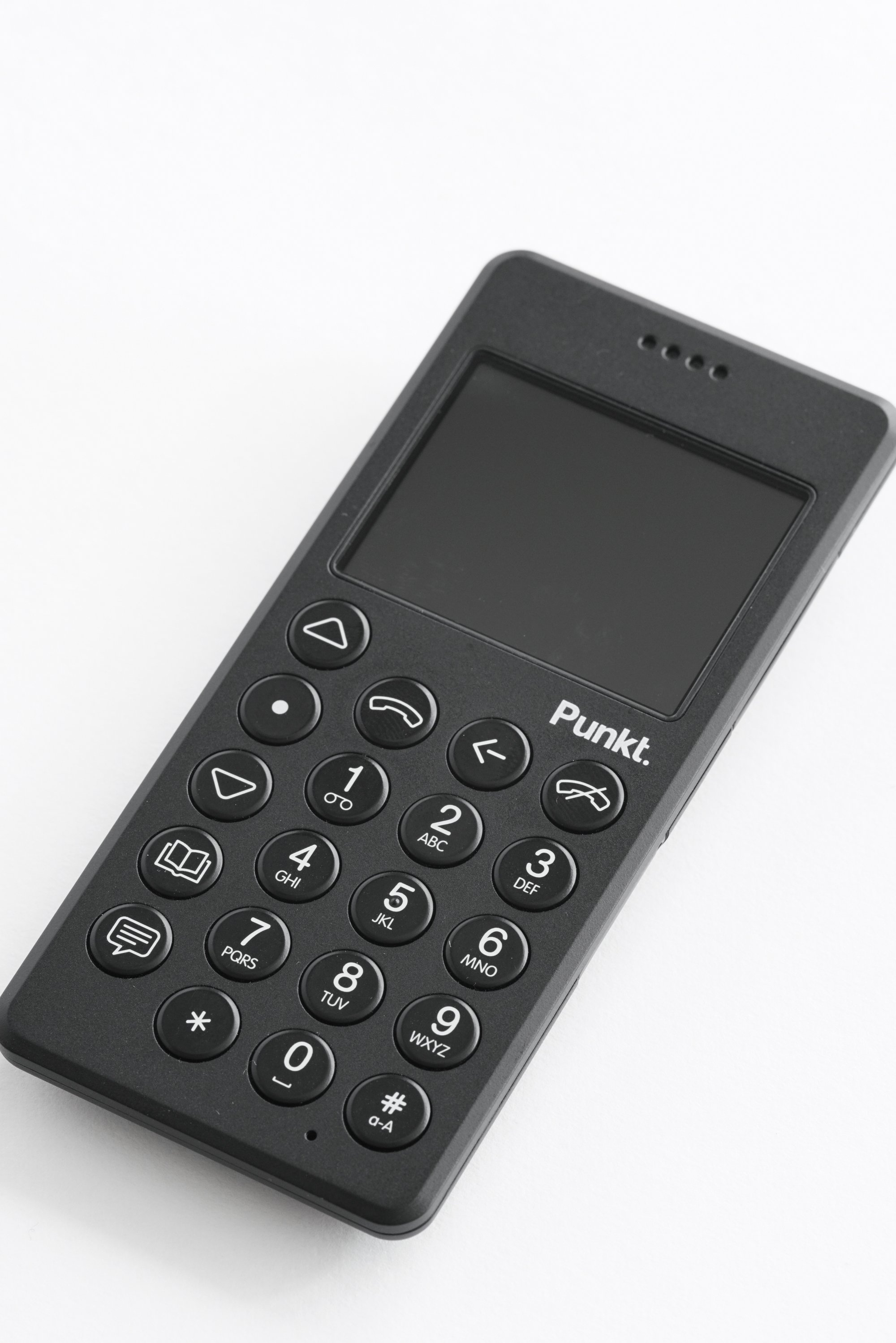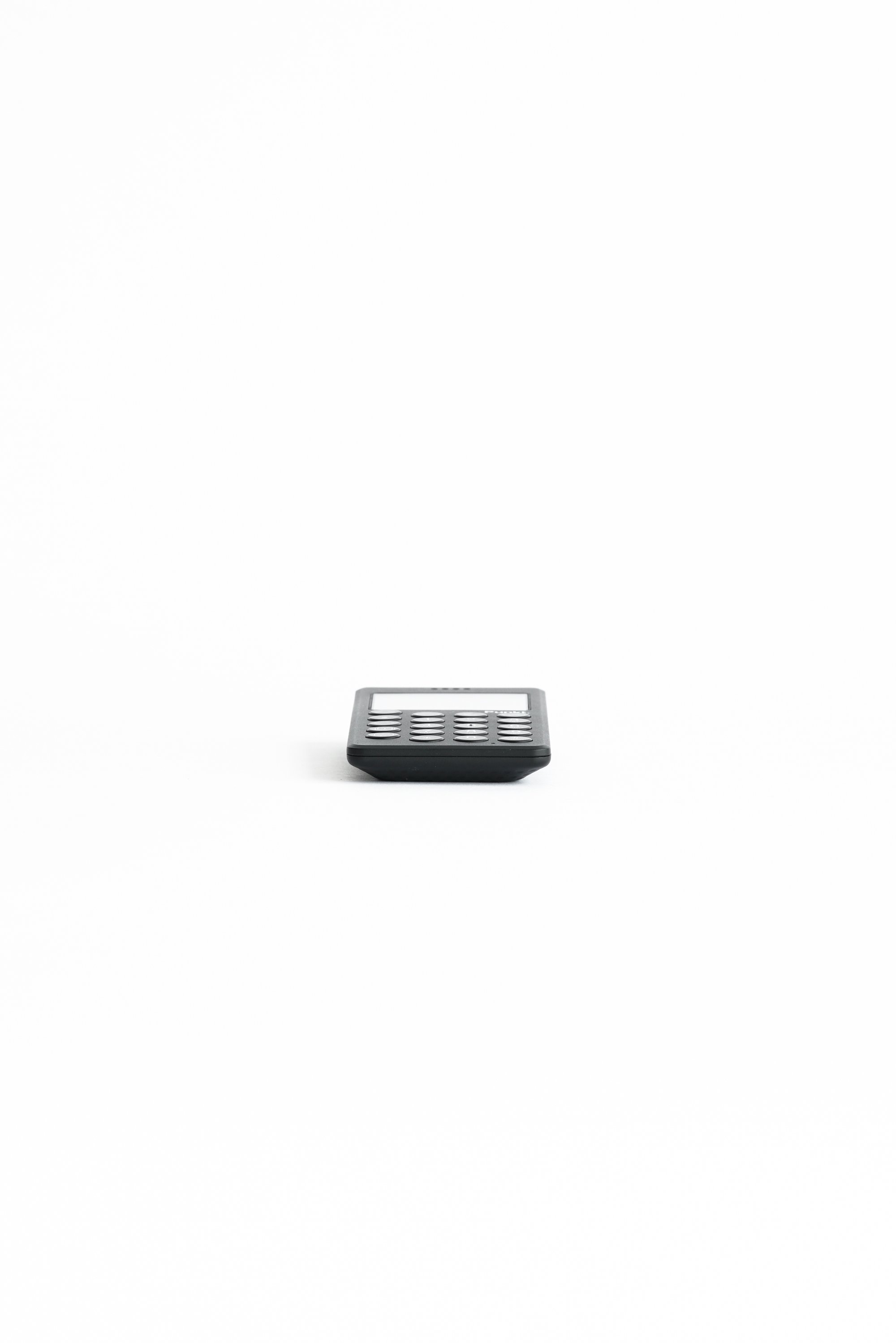





TAKAHIRO TSUCHIDA
DESIGN COLUMN Vol.1
Jasper Morrison - Punkt. MP01
プロダクトデザイナーのジャスパー・モリソンは、スイスの「Punkt.」のためにいくつかの製品をデザインしている。「MP01」は2015年に発表された携帯電話で、スマートフォンが世界的の主流になっている昨今、あまり目にしなくなった電話とショートメールの機能しかもたない機種。GSM方式なので日本では使えないけれど、ものとしての不思議な魅力を感じてしまい購入に至った。2017年、ロンドンのジャスパー・モリソン・ショップでのことだった。
すみずみまで、よくできている。これくらいの機能の携帯電話が主流だった頃は、新しい機種がすぐに登場するのが前提で、製造工程も含めてしっかりとデザインされたものが少なかったのかもしれない。「MP01」の外装部はプロフェッショナル用カメラと同じ工場で製造されているといい、素材感やディテールに隙がない。手に持った感覚の心地よさは、忘れていた何かを思い出させる。ボタンの感触や、落としても割れないディスプレイも、普通に安心感がある。この感触と比べると、現在のスマートフォンの形、重さ、寸法などがあくまで性能を優先して発想されているのがわかる。
もうひとつ興味深いのは、デザインがテクノロジーと人の間を取り持つというテーマが、この携帯電話に反映されていること。テクノロジーは常に進歩しつづけ、歩みを止めることも退行することもなく、さらに進歩を加速しているように思える。一方で人間は、進歩に対応できることもあれば、できないこともあり、できてもしたくないこともある。「MP01」は、デザインが人間の立場からテクノロジーを捉えて、適切な関係をつくり出す可能性を明らかにする。それはずっと昔から、新しい技術や素材などが生まれるたびに、デザインが担ってきた役割でもあった。
しかし一方で、「MP01」のような携帯電話が普及するのはたぶん難しい。スマートフォンをやめてこれだけをもつ勇気はないし、スマートフォンと並行してもってもあまり意味がない。タブレットと一緒にもつという役割分担はありかもしれないが、それを1台で済ますのがスマートフォンだろう。だからといって、「MP01」のコンセプトを部分的に取り入れたスマートフォンというのも考えにくい。それが定着するならiPhone5Cの路線がもっと定着したはずだ。現在のスマートフォンのあり方に多少でもストレスを感じる人々が、少数派だととは思えないけれど。「MP01」がもたらす気づきは、こんなふうに人間の矛盾と結びついている。この点については、いつかジャスパー・モリソン本人に尋ねてみたい。
土田貴宏 / ライター、デザインジャーナリスト
1970年北海道生まれ。2001年からフリーランスで活動。国内外での取材やリサーチをもとに、デザイン誌をはじめ各種媒体に寄稿している。
Product designer Jasper Morrison has designed several products for the Swiss company Punkt. The MP01 is a cell phone released in 2015, and although it cannot be used in Japan due to its GSM system, I found it strangely attractive as a product and ended up buying it. It was at the Jasper Morrison store in London in 2017.
Every detail is well done. When cell phones with this level of functionality were mainstream, it was assumed that new models would appear soon, and perhaps there were few that were well designed, including the manufacturing process. The exterior of the MP01 is said to be manufactured in the same factory that produces professional cameras, and the materials and details are flawless. The comfort of holding it in your hand reminds you of something you have forgotten. The feel of the buttons and the display, which does not break even if dropped, are also normally reassuring. Compared to this feeling, it is clear that the shape, weight, and dimensions of today's smartphones are conceived with performance as the only priority.
Another interesting aspect of this phone is that it reflects the theme that design is the bridge between technology and people. Technology seems to be constantly advancing, neither stopping nor regressing, but accelerating its progress even further. Humans, on the other hand, are sometimes able to cope with progress, sometimes not, and sometimes not willing to even if they could. MP01" reveals the potential for design to view technology from a human standpoint and create appropriate relationships. This has long been the role that design has played whenever new technologies, materials, etc. have been created.
On the one hand, the "MP01" is an attempt to capture the potential of technology. On the other hand, it is probably difficult for a cell phone like the "MP01" to become popular. I don't have the courage to stop having a smartphone and just have this one, and it wouldn't make much sense to have it alongside a smartphone. It may be possible to share the role with a tablet, but smartphones can play both roles. That said, it is difficult to imagine a smartphone that partially incorporates the MP01 concept. If that were to take root, the iPhone5C line would be more established. It is hard to believe that there is a minority of people who are even slightly stressed by the current state of smartphones. The realization that the MP01 brings about is tied to human contradictions like this. I would like to ask Jasper Morrison about this someday.
Takahiro Tsuchida / Writer, Design Journalist
Born in Hokkaido in 1970, Tsuchida has been working freelance since 2001. Based on interviews and research in Japan and abroad, he contributes to various media including design magazines.